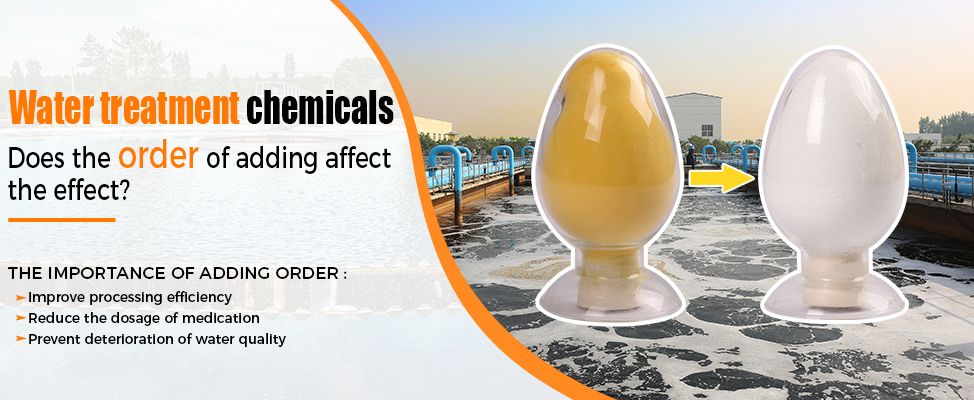
In industrial wastewater, municipal sewage, and drinking water treatment, the dosing order of chemicals is a crucial factor that directly impacts treatment performance. Even with the right chemicals, an incorrect dosing sequence may result in poor coagulation, wasted chemicals, and substandard effluent quality.
Sequence of Chemical Reactions
-Coagulants (e.g., PAC, PFS) must be added first to neutralize colloidal particles.
-Flocculant aids (e.g., PAM) should follow to promote floc growth and sedimentation.
Interactions Between Chemicals
-If PAM is added before PAC, it may be neutralized and lose its effectiveness.
-pH adjusters must be used beforehand to ensure stable coagulant performance.
Efficiency and Cost Control
-Correct dosing order reduces consumption, enhances settling speed, and lowers sludge handling costs.
Raw Water → pH Adjuster → Coagulant (PAC/PFS/PAFC) → Flocculant (PAM/Polyamine) → Disinfectant
Used in municipal and drinking water treatment.
High Turbidity Wastewater → Coagulant (PAC/PFS) → PAM → Filtration
Typical in mining, sand washing, and coal washing wastewater.
High COD/Color Wastewater → Iron-based Coagulant (PFS/PAFC) → PAC → PAM
Common in textile, paper, and chemical wastewater.
Municipal Wastewater Plants
Optimized dosing order reduces turbidity by 20–30% and saves about 10% in chemical costs.
Textile Wastewater Treatment
Adding PFS first, followed by PAC and PAM, can increase COD removal efficiency by 15–25%.
Coal Washing Wastewater
PAC + PAM dosing improves settling speed significantly, ensuring cleaner recirculating water.
Q1: What happens if PAM is added before PAC?
A: PAM will be wasted as it gets neutralized, resulting in poor flocculation.
Q2: Can dosing order be determined purely by experience?
A: No. Water quality varies, so jar tests are essential for determining the best order.
Q3: Can PAC and PFS be dosed together?
A: Yes, but it is recommended to add PFS first, then PAC, to maximize their performance.
Q4: Is dosing order important for all types of wastewater?
A: Less critical for lightly polluted water, but essential for high COD and turbidity wastewater.
Q5: What are the consequences of incorrect dosing order?
A: Substandard effluent, excess sludge, and increased operational costs.
The dosing order of water treatment chemicals directly affects treatment efficiency, operating costs, and effluent quality. By adopting the right sequence, plants can significantly improve flocculation and compliance.
With 28 years of expertise, we supply a full range of water treatment chemicals including PAC, PFS, PAFC, and PAM, along with laboratory jar tests and technical guidance, ensuring optimal dosing strategies for our clients.

Please contact us for free quotation by form below. We promise the quickest response within 24 hours: